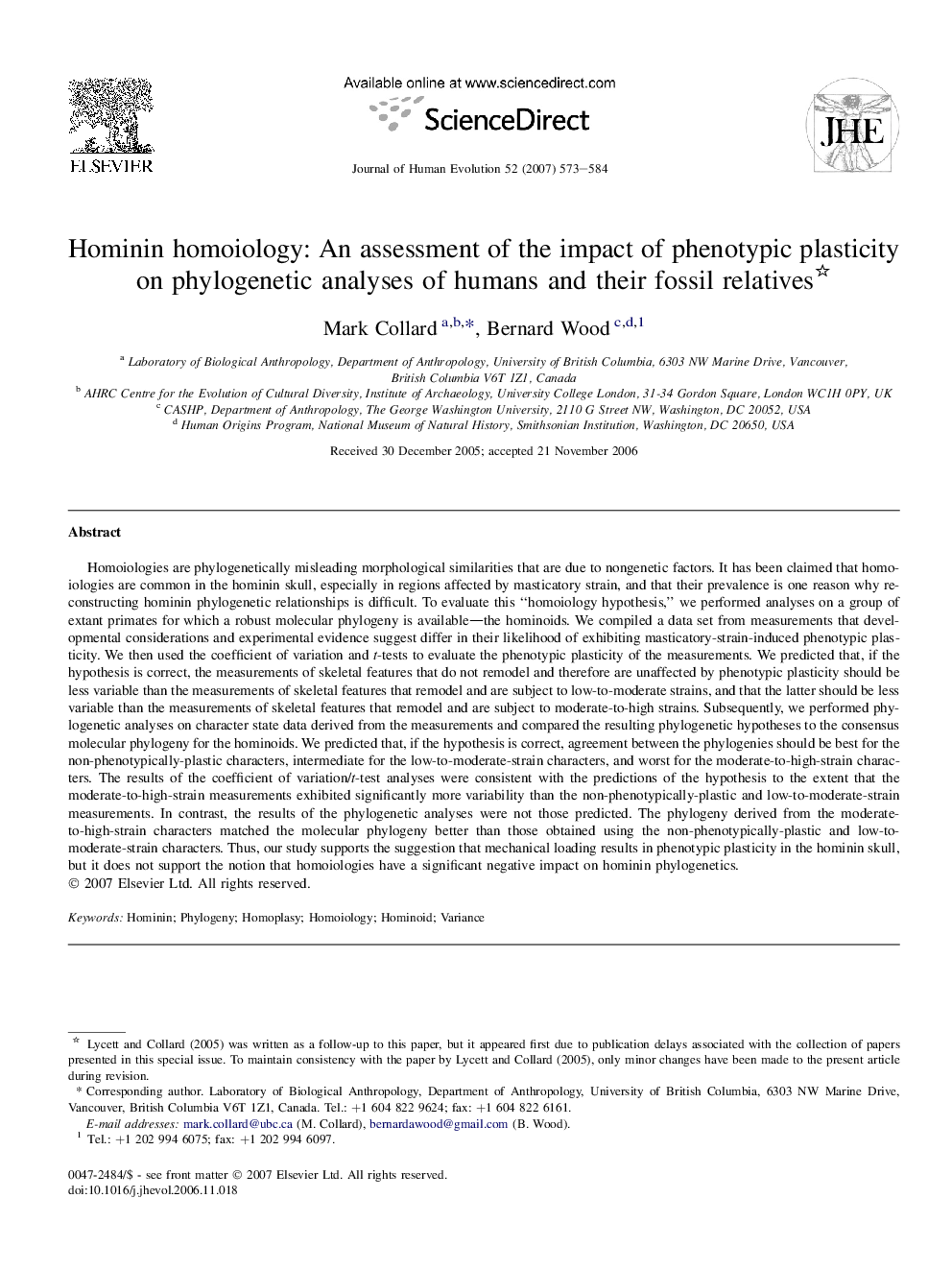| کد مقاله | کد نشریه | سال انتشار | مقاله انگلیسی | نسخه تمام متن |
|---|---|---|---|---|
| 4556866 | 1329508 | 2007 | 12 صفحه PDF | دانلود رایگان |

Homoiologies are phylogenetically misleading morphological similarities that are due to nongenetic factors. It has been claimed that homoiologies are common in the hominin skull, especially in regions affected by masticatory strain, and that their prevalence is one reason why reconstructing hominin phylogenetic relationships is difficult. To evaluate this “homoiology hypothesis,” we performed analyses on a group of extant primates for which a robust molecular phylogeny is available—the hominoids. We compiled a data set from measurements that developmental considerations and experimental evidence suggest differ in their likelihood of exhibiting masticatory-strain-induced phenotypic plasticity. We then used the coefficient of variation and t-tests to evaluate the phenotypic plasticity of the measurements. We predicted that, if the hypothesis is correct, the measurements of skeletal features that do not remodel and therefore are unaffected by phenotypic plasticity should be less variable than the measurements of skeletal features that remodel and are subject to low-to-moderate strains, and that the latter should be less variable than the measurements of skeletal features that remodel and are subject to moderate-to-high strains. Subsequently, we performed phylogenetic analyses on character state data derived from the measurements and compared the resulting phylogenetic hypotheses to the consensus molecular phylogeny for the hominoids. We predicted that, if the hypothesis is correct, agreement between the phylogenies should be best for the non-phenotypically-plastic characters, intermediate for the low-to-moderate-strain characters, and worst for the moderate-to-high-strain characters. The results of the coefficient of variation/t-test analyses were consistent with the predictions of the hypothesis to the extent that the moderate-to-high-strain measurements exhibited significantly more variability than the non-phenotypically-plastic and low-to-moderate-strain measurements. In contrast, the results of the phylogenetic analyses were not those predicted. The phylogeny derived from the moderate-to-high-strain characters matched the molecular phylogeny better than those obtained using the non-phenotypically-plastic and low-to-moderate-strain characters. Thus, our study supports the suggestion that mechanical loading results in phenotypic plasticity in the hominin skull, but it does not support the notion that homoiologies have a significant negative impact on hominin phylogenetics.
Journal: Journal of Human Evolution - Volume 52, Issue 5, May 2007, Pages 573–584